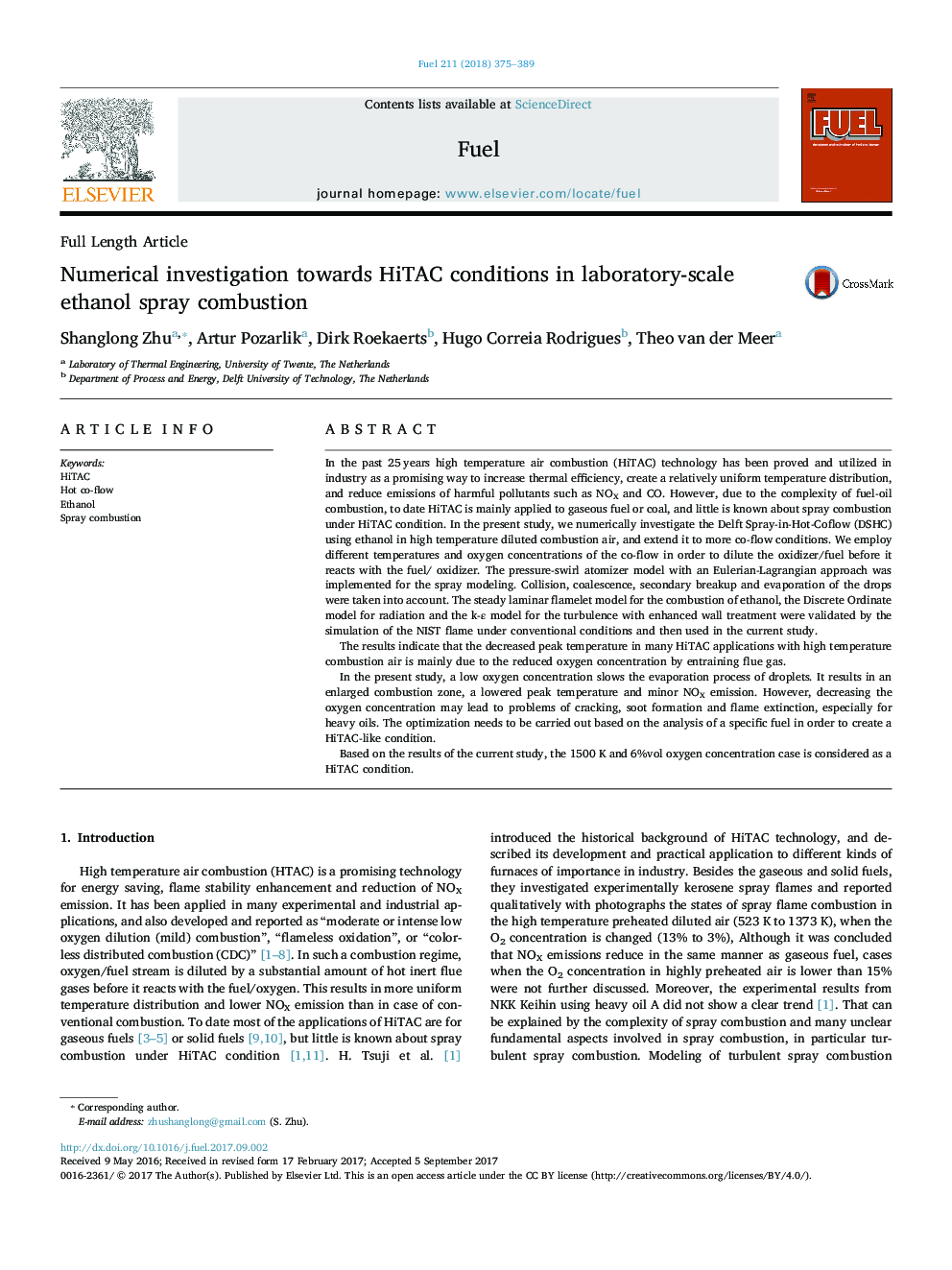| کد مقاله | کد نشریه | سال انتشار | مقاله انگلیسی | نسخه تمام متن |
|---|---|---|---|---|
| 6473487 | 1424953 | 2018 | 15 صفحه PDF | دانلود رایگان |
In the past 25 years high temperature air combustion (HiTAC) technology has been proved and utilized in industry as a promising way to increase thermal efficiency, create a relatively uniform temperature distribution, and reduce emissions of harmful pollutants such as NOX and CO. However, due to the complexity of fuel-oil combustion, to date HiTAC is mainly applied to gaseous fuel or coal, and little is known about spray combustion under HiTAC condition. In the present study, we numerically investigate the Delft Spray-in-Hot-Coflow (DSHC) using ethanol in high temperature diluted combustion air, and extend it to more co-flow conditions. We employ different temperatures and oxygen concentrations of the co-flow in order to dilute the oxidizer/fuel before it reacts with the fuel/ oxidizer. The pressure-swirl atomizer model with an Eulerian-Lagrangian approach was implemented for the spray modeling. Collision, coalescence, secondary breakup and evaporation of the drops were taken into account. The steady laminar flamelet model for the combustion of ethanol, the Discrete Ordinate model for radiation and the k-ε model for the turbulence with enhanced wall treatment were validated by the simulation of the NIST flame under conventional conditions and then used in the current study.The results indicate that the decreased peak temperature in many HiTAC applications with high temperature combustion air is mainly due to the reduced oxygen concentration by entraining flue gas.In the present study, a low oxygen concentration slows the evaporation process of droplets. It results in an enlarged combustion zone, a lowered peak temperature and minor NOX emission. However, decreasing the oxygen concentration may lead to problems of cracking, soot formation and flame extinction, especially for heavy oils. The optimization needs to be carried out based on the analysis of a specific fuel in order to create a HiTAC-like condition.Based on the results of the current study, the 1500 K and 6%vol oxygen concentration case is considered as a HiTAC condition.
Journal: Fuel - Volume 211, 1 January 2018, Pages 375-389
